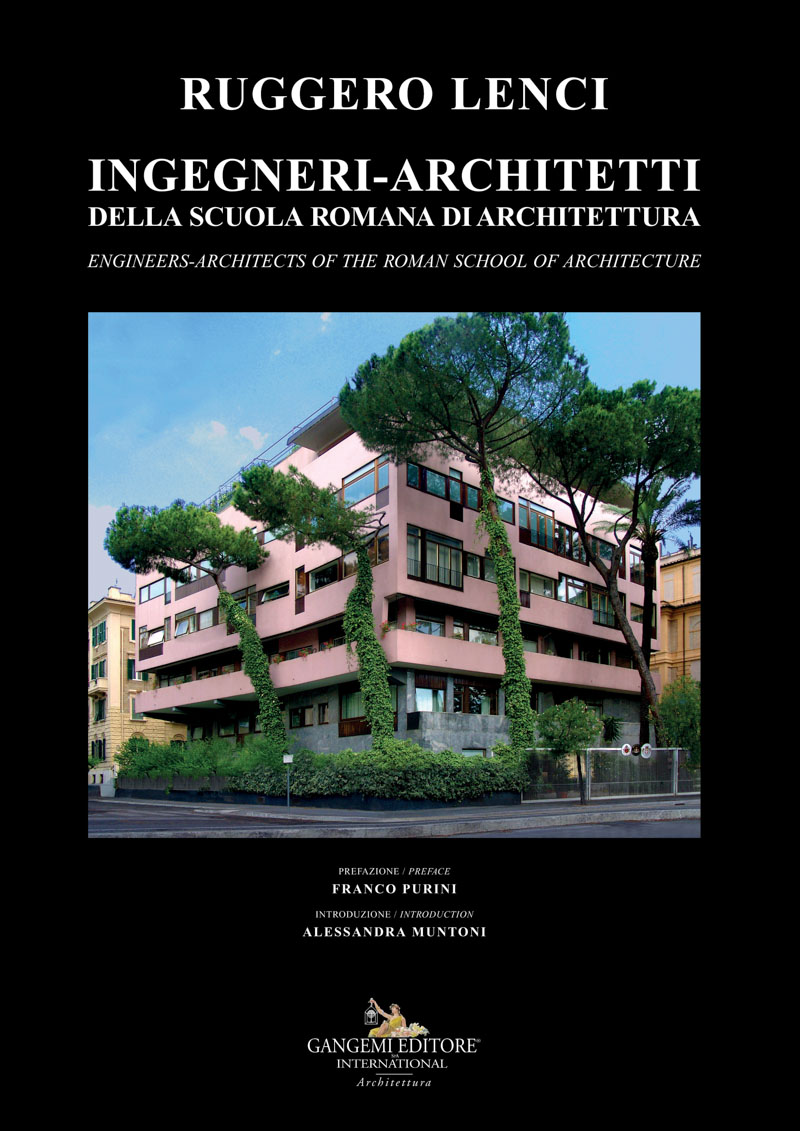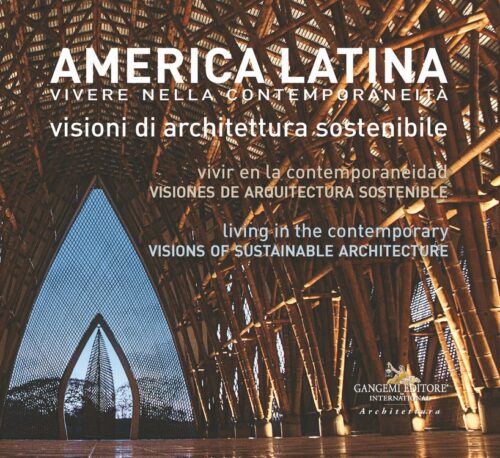
30,00 €
Ingegneri-Architetti della scuola romana di architettura / Engineers-Architects of the roman school of architecture
Prezzo prenotazione singole copie Autore
Autori: Lenci Ruggero
Facing English text
Formato: 21 x 29,7 cm
Legatura: Filorefe
Pagine: 320
Anno edizione: 2021
ISBN: GE6173
EAN: GE6173
UB. INT. :
Contenuto
Collana editoriale/ Editorial series ARCHITETTURA ENIGMATICA / ENIGMATIC ARCHITECTURE diretta da / directed by Franco Purini
Il presente libro, redatto a 150 anni dalla proclamazione di Roma capitale, mira a far emergere la storia per molti versi enigmatica degli ingegneri-architetti che hanno operato in una città divenuta dal 1871 un territorio nel quale consumare rapide e imponenti trasformazioni urbane. Non senza profonde ferite inferte a quelle magnifiche ville – alcune delle quali perdute per sempre – l’esperienza prodotta nel lungo percorso da tali trasformazioni ha reso riconoscibile una sensibilità operativa che, sia pur con errori ed eccessi, viene definita come appartenente alla Scuola Romana di Architettura. Operando uno scavo nella sua storia emerge che molti protagonisti di tali trasformazioni urbane sono stati degli ingegneri integrali che hanno amato l’architettura non meno degli architetti e che con essa si sono misurati ottenendo, gli uni e gli altri, i risultati che sono sotto gli occhi di tutti: edifici spesso di grande qualità, quartieri e anche palazzine che sono divenuti per i romani delle presenze amichevoli, costituenti, insieme ai pregiatissimi monumenti dell’antichità, il Vultus Urbis della città. Alle schiere di chiese e altri edifici anziani – magnifici e preziosi scrigni di inestimabile valore e grande commozione spaziale che lo Stato della Chiesa ha costruito e custodito nel tempo – si sommano le realizzazioni romane più giovanili di questo secolo e mezzo: da un lato speculazioni edilizie, dall’altro piani urbanistici e opere di grande pregio. Tutto ciò è avvenuto su un substrato di straordinari reperti archeologici imperiali e ancora più antichi che affiorano a Roma in ogni dove, guarniti dalla cura del verde che li incastona in passeggiate senza eguali. Ciò ha fatto sviluppare ai protagonisti della Scuola romana di architettura una sensibilità particolare che ha dato luogo alla tradizione del lavorare con preesistenze architettoniche di vario tipo, stabilendo con esse un rapporto di continuità paesaggistica, urbana, strutturale, narrativa, fotografica, e poi anche filmica di grande bellezza. Chiunque oggi voglia ricostruire le articolazioni di questa Scuola, delle sue tradizioni e declinazioni – sia esso architetto, ingegnere o altro ancora – non può esimersi dal ripercorrere le trasformazioni urbane di Roma capitale.
This book, which comes out 150 years after the proclamation of Rome as capital city, aims to bring to light the history in many ways enigmatic of the engineers-architects that worked in a city which became in 1871 a territory where very rapid and impressive urban transformations took place. Not without deep wounds inflicted on those magnificent Villas – some of which disappeared forever – the experience produced by these transformations has made recognizable in its unfolding an operational sensibility that, albeit with errors and excesses, can easily be defined as belonging to the Roman School of Architecture. Operating an excavation in its history emerges that many of the protagonists of these urban transformations were integral engineers who loved architecture no less than architects and who measured themselves with it, obtaining, all of them, the results that are under everyone’s eyes: buildings, often of great quality, neighborhoods and even Palazzine that have become for the Romans friendly presences constituting, together with the most valuable monuments of antiquity, the Vultus Urbis of the city. To the more ancient churches and other buildings – magnificent and precious caskets of inestimable value and great spatial commotion that the Papal State has built and preserved over time – are added the younger Roman realizations of this century and a half: on one side building speculation, on the other urban plans and works of great value. All this has taken place in a substratum of extraordinary archaeological finds, imperials and older, that appear in Rome everywhere, garnished by the care of the landscapes that embed them in promenades without equal. All this led to the development by the protagonists of the Roman School of Architecture of a particular sensitibility which gave rise to the tradition of working with architectural pre-existences of various type, establishing with them a relationship of continuity in landscape, urban, structural, narrative, photographic, and then also filmic of great beauty. Whoever today wants to reconstruct the articulations of this School, of its traditions – whether architect, engineer or other – cannot avoid to retrace the path of the urban transformations of Rome as capital city.
Ruggero Lenci (Roma, 1955) è professore di Composizione Architettonica e Urbana alla Facoltà di Ingegneria Civile e Industriale, Sapienza Università di Roma. Afferisce al Dipartimento DICEA.
Ruggero Lenci (Rome 1955) is Professor of Architectural and Urban Design at the Faculty of Civil and Industrial Engineering, Sapienza University of Rome. He is a member of the DICEA Department.
Tra i suoi libri / among his books:
Massimiliano Fuksas – oscillazioni e sconfinamenti (Testo e Immagine, Torino 1996)
Manzone Architetto (Gangemi, Roma 1997)
I.M. Pei – teoremi spaziali (Testo e Immagine, Torino 2004)
Lenci Valentin – architettura teorematica (Mancosu, Roma 2005)
Studio Passarelli – cento anni cento progetti (Electa, Milano 2006)
Didattica e Architettura – tesi in composizione architettonica (Prospettive, Roma 2007)
Evoluzione e Architettura tra scienza e progetto (Prospettive, Roma 2008)
Pietro Barucci Architetto (Electa, Milano 2009)
Morfemi dinamici (Prospettive, Roma 2011)
Mutazioni Laurentino 38 (Prospettive, Roma 2011)
L’enigma del Girasole (Gangemi, Roma 2012)
L’enigma di Eurosky (Gangemi, Roma 2014)
L’enigma dell’opera poligonale con blocchi concavi (Gangemi, Roma 2019)
L’abitazione sostenibile, mutazioni genetiche a Tor Bella Monaca (Gangemi, Roma 2019)
Vultus Urbis (Gangemi, Roma 2020)
L’enigma dell’unità abitativa tra teoria e ricerca progettuale (Gangemi, Roma 2020)
Tra i libri curati / among the edited books:
Trenta lezioni di architettura più una, a cura di AA.VV. (Gangemi, Roma 1990)
Sergio Lenci – l’opera architettonica 1950-2000, a cura di Ruggero Lenci (Diagonale, Roma 2000)
Annali del DAU, Intersezioni, a cura di AA.VV. (Gangemi, Roma 2005)
Lo sguardo sul muro, di Massimo Birindelli, a cura di Ruggero Lenci (Mancosu, Roma 2006)
Annali del DAU, Nella Ricerca, a cura di AA.VV. (Gangemi, Roma 2008)
L’Estate Romana di Renato Nicolini, a cura di AA.VV.(Gangemi, Roma 2013)
The Europe’s Become, Il Divenire dell’Europa, a cura di AA.VV. (Gangemi, Roma 2013)
Roma, Crisi del Progetto e della Civitas, a cura di AA.VV. (Ingramspark, Roma 2017)
Curare lo spirito nei luoghi della cura del corpo, a cura di AA.VV. (Gangemi, Roma 2019)
Centocinque domande a Pietro Barucci, a cura di Ruggero Lenci (CLEAN, Napoli 2020)
Parole chiave
Condividi su












